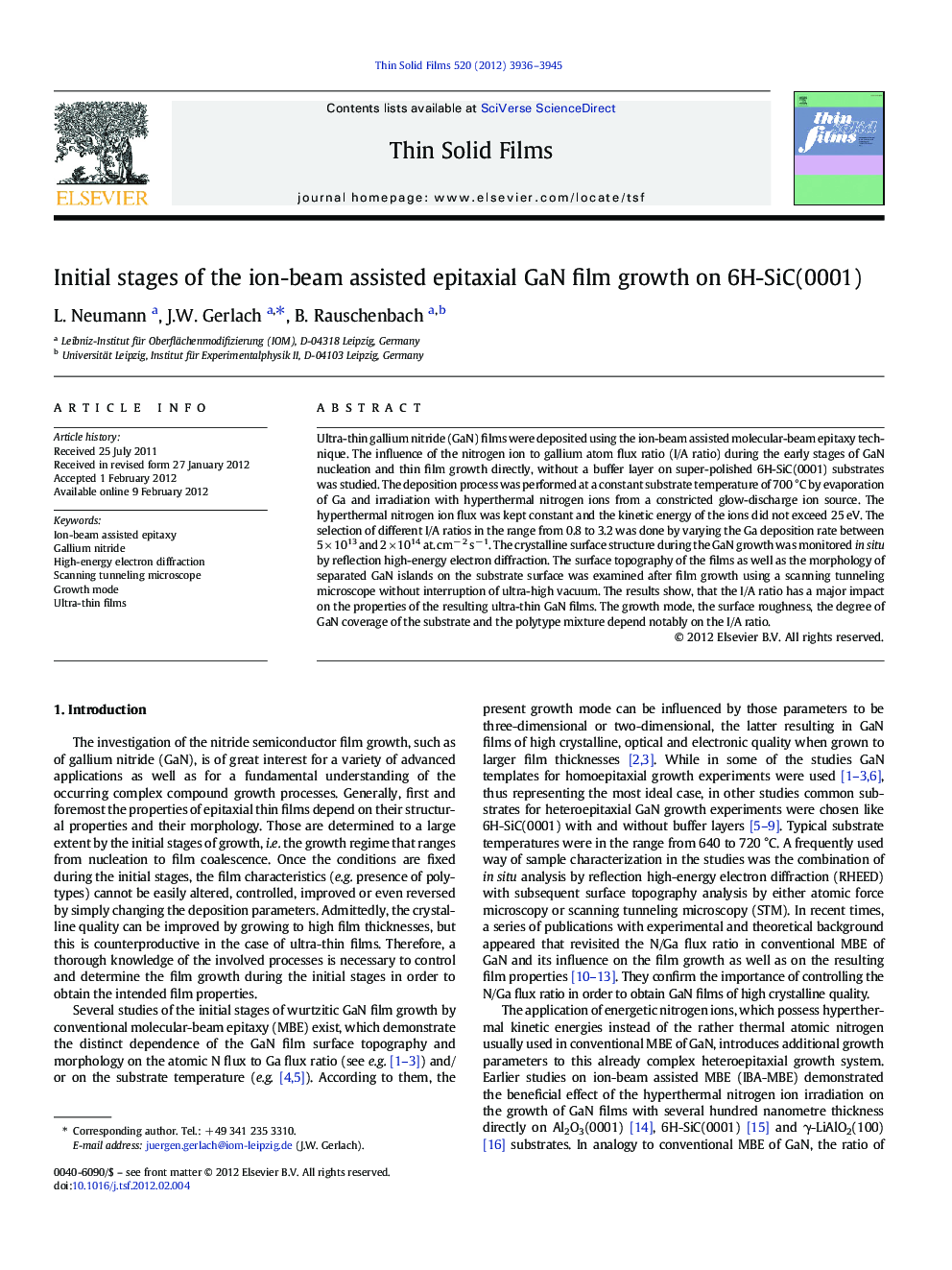| Article ID | Journal | Published Year | Pages | File Type |
|---|---|---|---|---|
| 1667235 | Thin Solid Films | 2012 | 10 Pages |
Ultra-thin gallium nitride (GaN) films were deposited using the ion-beam assisted molecular-beam epitaxy technique. The influence of the nitrogen ion to gallium atom flux ratio (I/A ratio) during the early stages of GaN nucleation and thin film growth directly, without a buffer layer on super-polished 6H-SiC(0001) substrates was studied. The deposition process was performed at a constant substrate temperature of 700 °C by evaporation of Ga and irradiation with hyperthermal nitrogen ions from a constricted glow-discharge ion source. The hyperthermal nitrogen ion flux was kept constant and the kinetic energy of the ions did not exceed 25 eV. The selection of different I/A ratios in the range from 0.8 to 3.2 was done by varying the Ga deposition rate between 5 × 1013 and 2 × 1014 at. cm− 2 s− 1. The crystalline surface structure during the GaN growth was monitored in situ by reflection high-energy electron diffraction. The surface topography of the films as well as the morphology of separated GaN islands on the substrate surface was examined after film growth using a scanning tunneling microscope without interruption of ultra-high vacuum. The results show, that the I/A ratio has a major impact on the properties of the resulting ultra-thin GaN films. The growth mode, the surface roughness, the degree of GaN coverage of the substrate and the polytype mixture depend notably on the I/A ratio.
► Ultra-thin epitaxial GaN films prepared by hyperthermal ion-beam assisted deposition. ► Surface structure and topography studied during and after initial growth stages. ► Growth mode dependent on nitrogen ion to gallium atom flux ratio. ► Change from three-dimensional to two-dimensional growth for Ga-rich growth conditions.
